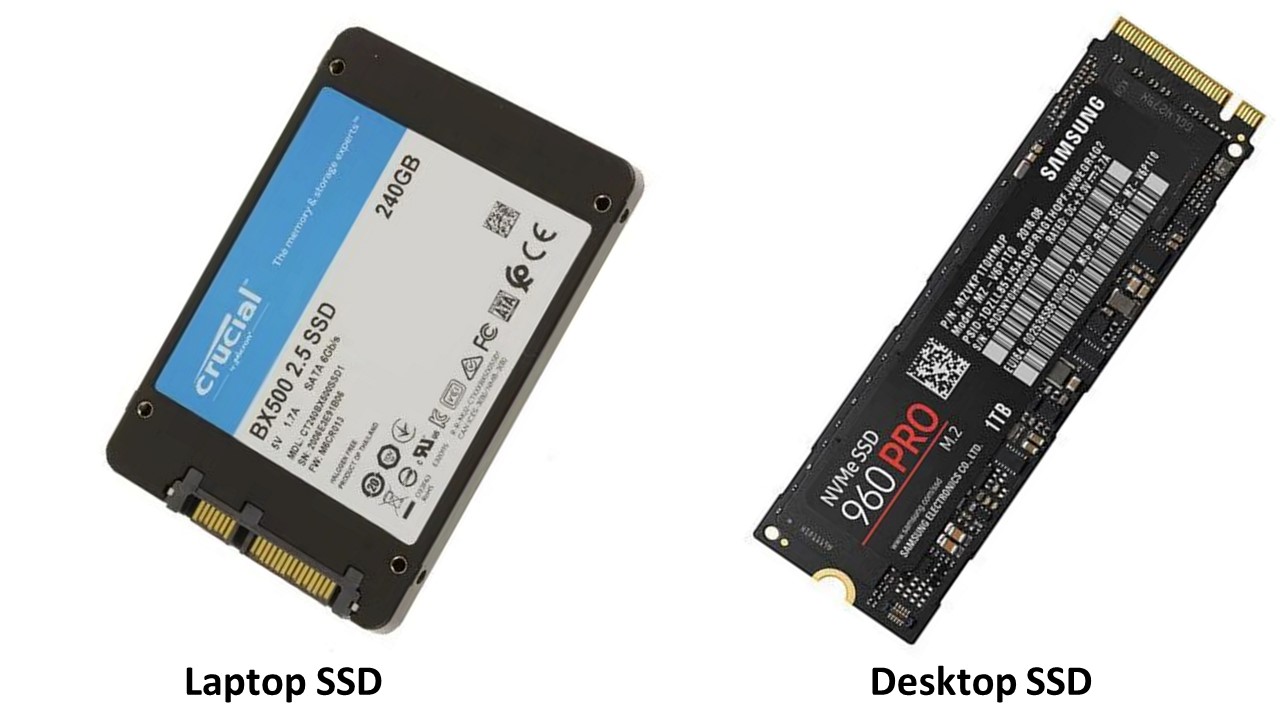A desktop and a laptop SSD will offer different levels of performances due to the differences in their features and abilities. If you are a first timer, it will not be easy for you to make a choice between these two types of SSDs.
This article comes up with some notable differences between the two SSDs in terms of their design and other technicalities.
In This Article
KEY TAKEAWAYS
- The laptop SSDs typically come in a 2.5 inch form factor but the desktop SSDs are larger than that having a 3.5 inch form factor.
- The laptop SSDs are usually 7 mm thick but the desktop SSDs are usually 15 mm thick.
- A laptop SSD can be used in a desktop computer but such a switch cannot be made in a laptop computer.
The 6 Differences Between Desktop and Laptop SSD

1. Thickness
One of the major differences between a laptop SSD and a desktop SSD is their thickness.
The 2.5-inch desktop SSD or U2 is twice as thick in comparison to a conventional laptop drive. In fact, the U2 will usually be 15 mm thick.
On the other hand, the laptop SSD will usually be 7 mm thick.
However, the bay in some of the laptops may support a 9.5 mm thick drive but certainly not a 15 mm thick drive like in a desktop computer.
2. Form factor
The laptop drives typically use a 2.5″ form factor. On the other hand, the desktops use a 3.5″ form factor.
This means that you can use a larger drive in a desktop with larger capacity since weight and space are no constraint in a desktop computer as they are in a laptop computer.
3. Switching
With reference to the form factors of the SSDs, you can use a laptop SSD in a desktop computer because the bay will support the 2.5” SSD that a laptop typically comes with.
On the other hand, a desktop SSD will not fit in a laptop if it is 3.5” in size.
4. Enclosure
Though not related directly to the SSDs, the enclosure of the laptop to fit an SSD may be smaller than the enclosure of the desktop.
This might cause some issues when you want to install a desktop SSD in a laptop SSD being larger in size.
5. SATA Connections
Though both desktop and laptop computers have the capacity to use Serial Advanced Technology Attachment (SATA) cables SSD, you can only insert the ones with a 2.5” form factor in a laptop.
However, the desktop computers can support SSDs of higher form factors with the same type of SATA connections.
6. Installation
While installing a desktop drive, you may need to use a mounting kit if you want to install the SSD on a bigger drive bay.
For example, while installing a 2.5” drive in a 3.5” drive bay you will require a 2.5″ → 3.5″ drive/SSD mount.
On the other hand, there is no such need in the case of a laptop SSD because it normally supports only one type of form factor.
Conclusion
As it is pointed out by this article, there is really not much difference between a laptop SSD and a desktop SSD.
Apart from the form factor, there is nothing significantly different in the two that will affect the tasks they perform.